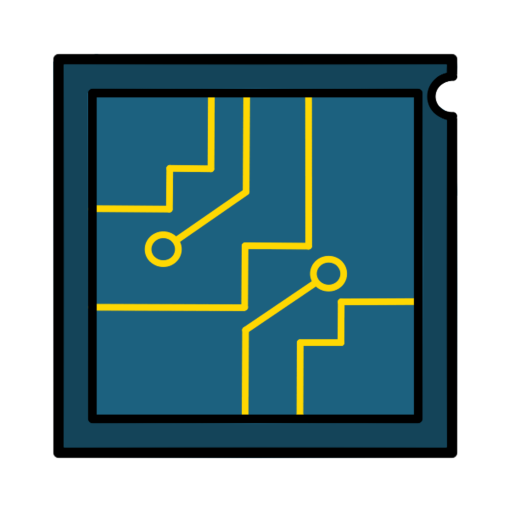Contents
- High Performance Computing
- Data Center Workloads
- Accelerated Computing Leadership
- Data Center CPUs
- Epyc Hyperscalers
- SAP Collaboration
- Packaging Leadership
- Epyc Milan-X
- Instinct Aldeberan (MI200)
- Frontier (ORNL)
- Epyc Roadmap
- References
High Performance Computing
- Smarter Client Devices & Edge
- AI & Analytics
- 5G & Communication Infrastructure
- Adaptable & Intelligent Systems
- Gaming, Visualisation & Simulation
- Cloud, Network, Hyperscalers & Supercomputers
Data Center Workloads
- Challenging
- Require Innovation
General Purpose
- Socket-level Performance
Technical
- Per-core Performance
Accelerated
- Highly Parallel
- Massive Computational Capability
Cloud-Native
- Maximum Core & Thread Density
Accelerated Computing Leadership
Hardware Innovation
Software Innovation
System Design Innovation
Focus on CPUs and GPUs
New Cores
New Packaging & Process Technologies
New Products
Combining it all with Exascale Computing
Data Center CPUs
- Tremendous Progress for the past 4 years
- New Trajectory for Performance & Scalability
- New levels of Data Security
- Growing Customer for Epyc
- 200 Million EPYC Cores shipped to customers
- Cloud, Enterprise & HPC
Epyc Hyperscalers
Amazon Web Services
Alibaba Cloud
Baidu Cloud
Google Cloud
IBM Cloud
Oracle Cloud
Microsoft Azure
Tencent Cloud
Twitter
Meta (Newest Hyperscaler adopting Epyc)
SAP Collaboration
- S/4HANA on AMD Epyc
- Rise with Epyc Offering
- Reduced TCO$ and Carbon Footprint
- AMD is one of the first customers
Packaging Leadership
- 2015: 2.5D HBM
- 2017: MCM
- 2019: Chiplets
- 2021: 3D Chiplets (Chiplets + Advanced 3D Stacking)
Epyc Milan-X
3D Chiplets on Epyc Milan
Launch: Q1 2022
L3 Cache: 3x Milan
L2+L3 Cache/Socket: Up to 804 MiB
Cores: Up to 64 Zen 3
SP3-Socket Compatible (With BIOS Upgrade)
>50% Uplift in targeted Accelerated Computing Workloads
Reduces Memory Bandwidth Pressure
Reduces Latency [On Average]
Take advantage of software without changes
Hybrid Bonding
- Direct Copper-to-copper Bonding
- Improves Thermals
- Increases Interconnect Density
- 200x Interconnect Density over 2D Chiplets
- 15x Interconnect Density over Microbump 3D
- 3x Interconnect Energy Efficiency over Microbump 3D
Technical Computing
Finite Element Analysis
Structural Analysis
Computational Fluid Dynamics
Electronic Design Automation
Wide ISV Ecosystem (Certified and Highly Performant)
Competition
Finite Element Analysis (Ansys Mechanical)
2P Epyc 75F3 has 33% uplift over 2P Xeon 8362
Structural Analysis (Altair Radioss)
2P Epyc 75F3 has 34% uplift over 2P Xeon 8362
Fluid Dynamics (Ansys CFX)
2P Epyc 75F3 has 40% uplift over 2P Xeon 8362
Electronic Design Automation (Synopsys - RDNA 2 Core in 1 hour)
40.6 Jobs on 16C Milan-X over 24.4 Jobs on 16C Milan (66% Uplift)
Data Center Benefits
- Enterprise Applications
- Data Mining
- Risk Analysis
- Anomaly Detection
- Media and Entertainment
- Live Broadcasting
- Visual Effects
- Realtime Rendering
- Artificial Intelligence
- Recommendation Engines
- Natural Language Processing
- Image Reception
Microsoft Azure HPC
- Azure HBv3 with Milan-X
- Private Preview - Today
- GA - Soon
- 80% Uplift in Ansys Fluent Aerospace Simulations
- 50% Uplift in Ansys Fluent Automotive Crash Test Modelling
OEM Partners
- Cisco
- Dell
- HP Enterprise
- Lenovo
- Supermicro
Instinct Aldeberan (MI200)
CDNA 2
Designed to enable Exascale Computing (HPC/ML)
3rd Generation Infinity Architecture
HPC Performance: 4.9x Nvidia A100
AI Performance: 1.2x Nvidia A100
Science Leadership (Fueling Exascale)
ROCm Open Ecosystem
Process Node: TSMC N6
Transistors: Up to 58 Billion (2 Dies)
Compute Units: 220
Matrix Cores: 880
Memory: 128 GB HBM2e @ 3.2 TB/s (8 HBM2e Stack)
4x Capacity
2.7x Bandwidth
MI200 Series
- OAM (Shipping Today)
- MI250, MI250X
- PCIe (Coming Soon)
- MI210
Key Innovations
- Two CDNA 2 Dies
- Second Generation Matrix Cores for AI
- Ultra High Bandwidth Die Interconnect
- Coherent CPU-to-GPU Interconnect (8 Infinity Fabric Links)
- 2.5D Elevated Fanout Bridge [ASE FOEB]
Performance in HPC & AI
- Note: Nvidia A100 vs Instinct MI250X (Advantage)
- FP64 Vector: 9.7 TF vs 47.9 TF (4.9x)
- FP32 Vector: 19.5 TF vs 47.9 TF (2.5x)
- FP64 Matrix: 19.5 TF vs 95.7 TF (4.9x)
- FP32 Matrix: N/A vs 95.7 TF (N/A)
- FP16/BF16 Matrix: 312 TF vs 383 TF (1.2x)
- Memory Capacity: 80 GB vs 128 GB (1.5x)
- Memory Bandwidth: 2.0 TB/s vs 3.2 TB/s (1.6x)
Application Performance
Note: Instinct MI250X vs Nvidia A100
AMG: 3.0x
HACC: 1.9x
HPL: 2.8x
LSMS: 1.6x
NBODY: 2.5x
OpenMM: 2.4x
Quicksilver: 2.5x
LAMPS ReaxFF (Hydrocarbon Combustion, 20M Atoms)
8.9M Atom Steps/s on Nvidia A100 vs 19.5M Atom Steps/s on Instinct MI250X (2.2x)
3rd Generation Infinity Architecture
- 800 GB/s Aggregate Bandwidth between CPUs and GPUs
- CPU-GPU Memory Coherency (Developer Productivity)
- Accessible Performance
Software (ROCm)
- Support for major AI frameworks
- Key ML Models optimised in ROCm 5.0
- ResNet, BERT, DLRM
Ecosystem
- Asus
- Atos
- Dell
- Gigabyte
- HP Enterprise
- Lenovo
- Microsoft
- Supermicro
Frontier (ORNL)
- Installation in progress
- Coming online soon
- Available to scientists in early 2022
Epyc Roadmap
- Adoption of Milan has outpaced Rome
HPC Process Technology
- Process Node: N5/N5P HPC
- Density: 2x
- Power Efficiency: 2x
- Performance: 1.25x
Epyc Genoa
Process Node: TSMC N5/N5P HPC
Cores: 96 Zen 4 Cores
Memory: DDR5
Interconnects: PCIe 5.0, CXL (incl. CXL.memory)
Enhanced Security Features
Sampling to Customers
On Track for 2022 Production & Launch
Epyc Bergamo
Process Node: TSMC N5/N5P HPC
Cores: 128 Zen \4c Cores
Software-compatible with Zen 4
Optimised for scale-out performance
Same socket and platform as Genoa
Significantly Improved Energy Efficiency
Density-optimised Cache Hierarchy
On Track for 2023H1 Production & Launch

